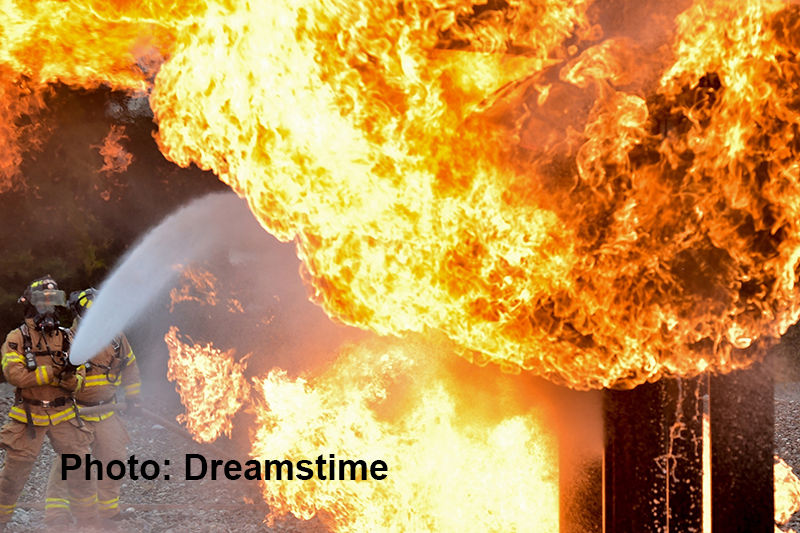
Scrap fires happen more often than you may think.
Fires in Daventry, Kidderminster, Swansea, Rochdale, Nottingham, Birmingham, Bury, Sidcup, Lancing are just a few of the scrap yard fires that have taken place in the first six months of 2020
It is easy to see how some fires could start, a missed battery or friction causing a spark, spilt fuel or other flammable liquid, tyres, non-metallic components to easily ignite the possibilities are numerous. Then when the fire is established it is extremely difficult to extinguish as the metal will burn. Vehicles are probably the main cause of scrap yard fires, until a vehicle is stripped to the shell there is a lot to burn: plastic, cloth, paint and fuel
Metal burns with a ferocious heat. Metal burns when the heat applied to it does dissipate fast enough, this is why it is easy to burn fine wire wool with the flame of a match, but not set fire to a six-inch nail. The nail having lots of metal dissipates the heat before it gets hot enough to burn, the wire wool heats up quickly and burns as a much smaller amount of metal is involved. Metal dust, filings or fine wire burn relatively easily. The atoms in the metal need to break apart and have access to Oxygen to burn and in a chunk of metal that has a high ignition temperature and is a good thermal conductor you need a lot of heat, which can be created in a fire. Most metals will combine with oxygen to some extent, you will see this as a corrosion or rusting processes, but this happens at a very slow speed, and doesn't free the large amounts of energy quickly that are associated with burning. To get a combustion reaction with a metal, things need to happen fast. One of the easiest ways to speed up the chemical reaction is to increase the temperature, and metals are more likely to react violently with oxygen (burn) when the temperature is high.
Some metals are more reactive with oxygen than others - magnesium is very reactive and will burn relatively readily - but under the right conditions almost any metal can combust. Magnesium is used in many motor vehicles and some alloys, it ignites at 632°C and burns at 1982°C. You probably remember from school Magnesium burns with a bright white flame. Unfortunately, if you put water on such a magnesium flame it just makes matters worse, so it is particularly troublesome to fire fighters.
Normally we don’t see metals burn because the temperatures needed are very much higher than we normally encounter - aluminium melts at 660C, copper at over 1,000C and steels at about 1,400C.
Metal is waterproof so firefighters have to rely on the cooling process, although good separation of different processes will help minimise the risk and it is important to separate magnesium and store it safely in its own area.
Fitting an automatic fire suppression system to a scrap yard will help but knowing how a fire may start and how hard it can be to extinguish is a good starting point.
July 2020

The web page was built with Mobirise
SHARE THIS PAGE!